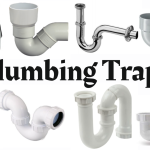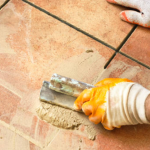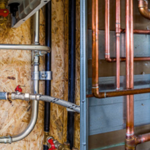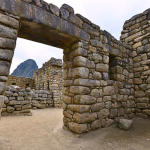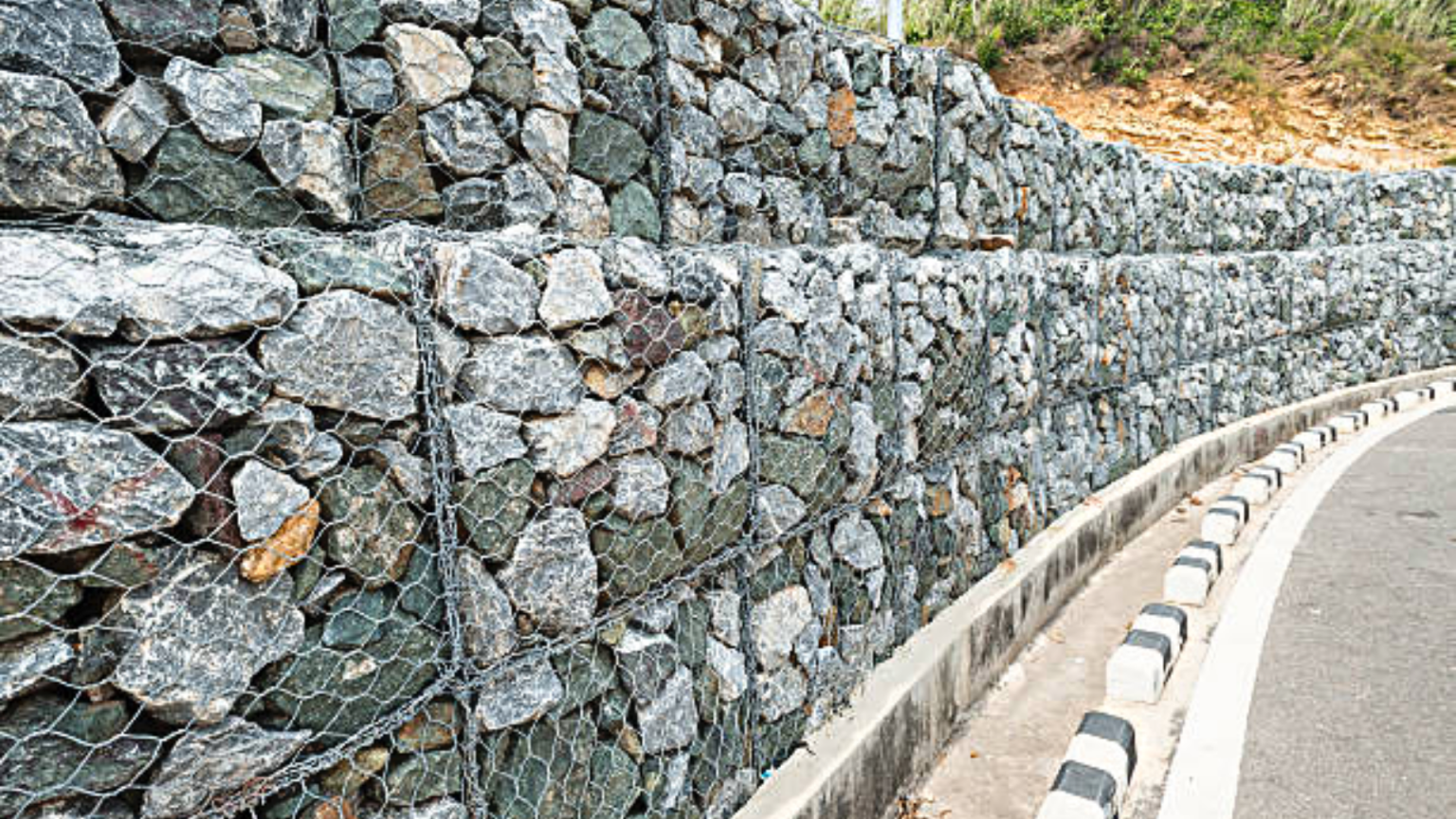
GABION TYPES | GABION APPLICATIONS |GABION BENEFITS AND DISADVANTAGES
Different types of gabions, including gabion baskets, gabion walls, gabion wire mesh, and gabion sacks, are frequently used in retaining walls, landscaping, military applications, and road construction for stabilizing banks, coasts, highways, slope stability, and erosion protection.
What is gabion?
A gabion is a cage or box made of welded wire that is filled with soil, rock, concrete, sand, or other materials. Therefore, gabions are a type of partially flexible block construction used in construction to protect against erosion and stabilize slopes. Different types of gabions are built and used in various engineering structures. In order to increase the gabion’s durability and stability, live rooting branches may occasionally be inserted in between the baskets of rocks. This article defines gabions, as well as their types, applications, and benefits.
Types of Gabions
There are various types of gabions that can be built and applied to structures. Gabions are a porous structure that can sometimes be vegetated to improve durability and stability. Gabion walls are classified according to their function and cost as follows:
Decorative gabion elements
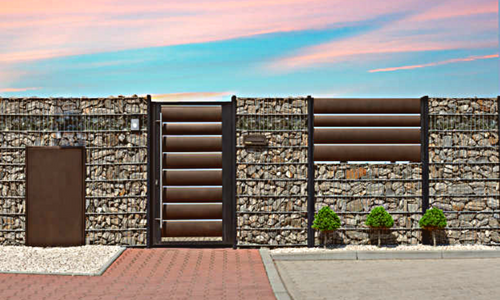
Decorative gabion elements are commonly used in landscaping and can be used for exterior and interior walls, and decorative gabions provide an aesthetic appearance. Gabion elements create an ideal environment for plant root development.
Gabion basket
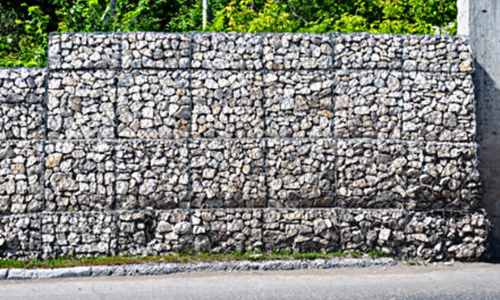
It is the most commonly used type of gabion. Gabion baskets are different sizes of box-shaped steel wire mesh. The baskets serve as semi-flexible erosion control building blocks when they are positioned on slopes and filled with stones.
Installation of plants and trees into a gabion basket is also recommended for stabilization. They can be used to build retaining walls, mounds, and banks, as well as highways and railways.
Gabion Basket Sizes
Gabion baskets come in a variety of sizes and shapes, including rectangular and cubical boxes. Traditional baskets made of twisted wire mesh range in size from three to twelve feet long, three to four and a half feet wide, and one to three feet high.
The size you require is determined by the size of the area for which they are required. Custom sizes are certainly an option, but they will be slightly more expensive.
What Are Gabion Baskets Made of?
These baskets are made of wire. The kind of wire you need will depend on the precise boxes you want. A heavy version of chicken wire with hexagonal openings is used in some gabion baskets. Others have square or rectangular openings and use a much heavier wire gauge to handle heavier loads.
Steel Galvanized
Most gabion baskets are made of galvanized steel wire that has been twisted together. They can be woven or welded, and both can be used in conjunction with one another.
The galvanized steel wire contributes to the baskets’ durability. A zinc-iron compound is used in this steel to act as a barrier against the elements, protecting the underlying metal.
PVC-Coated Mesh
Gabion baskets made of PVC-coated wire can also be used. These are all mesh baskets with a longer lifespan because the PVC coating is more resistant to the elements than galvanized steel alone.
PVC-coated wire may also look better, particularly if it matches the stone filling and surface area.
Gabion mattresses
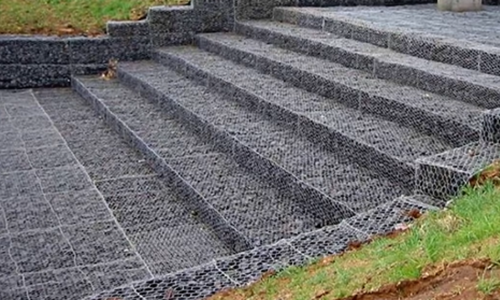
Another type of box gabion structure is gabion mattresses, also known as Reno mattresses. These gabions are shorter in height than other types of gabions.
They are used to protect against erosion when coating channels. They can also be used to cover a large area quickly without lifting it.
Gabion sacks
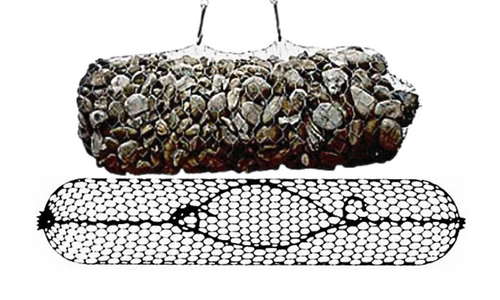
Gabion sacks are cylinder-shaped, double-twisted, galvanized steel wire mesh baskets with or without a PVC coating.
Gabion sacks are similar to gabion baskets. It can be used in an emergency situation as well as river training to provide water erosion protection.
Gabion wire mesh
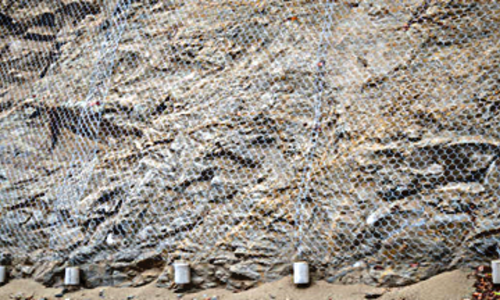
These are used to stabilize slopes and stop rock and stone from falling onto highways and railways. Gabion wire mesh is also used to reinforce embankments in conjunction with geogrids.
Also, Read: Types of Retaining Wall | Types of Wood Joints and Their Uses
Application of Gabion
Different gabion types are now being used in architectural design on a larger scale, not only for aesthetic but also functional reasons.
- Gabions are used in a wide range of applications, from landscaping to the construction of highways and private piers. The following are the various applications of gabions.
- Building retaining walls, soil stabilization, river training, canal training, hydraulic structure
- Gabion sacks are used in dam foundations.
- Prevent rock/stone falls and soil erosion on highways.
- It can act as a noise barrier.
- Gabions are used to build flood walls or to redirect flood waters.
- Finally, there are architectural and aesthetic considerations to consider.
Advantages of Gabions
1.Durability
Due to the well-bonded zinc coating on the wire, most gabion types are highly resistant to atmospheric corrosion.
2. Aesthetics
Gabion walls have a very natural and aesthetically pleasing appearance because they are made of natural materials that blend in with the environment.
3. Strength
Gabions are sufficiently strong, capable of withstanding flood force, torrential force, ice and earth pressure.
4. Flexibility
Gabion walls can be settled in any situation, such as unstable ground or moving water, without failing or losing their efficiency.
5. Permeability
Gabions are completely permeable. It naturally drains the water, eliminating the need for drainage pipes to be installed.
6. Economical
Gabion uses natural materials that are readily available on-site, so the acquisition and transportation costs are relatively low.
7. Environment friendly
The gabion cage may be constructed out of various recycled materials. The space between the materials allows plants to grow, which strengthens the structure of the wall and provides landscaping opportunities.
Disadvantages of Gabions
- Gabions’ disadvantages
- It is difficult to install; large equipment is required.
- If the gabion is not properly installed, it can fail quickly and contribute to erosion.
- When used to stabilize riverbanks, it increases water flow rate and erosion.
- Low habitat value; a low-quality wire cage will not last long.


